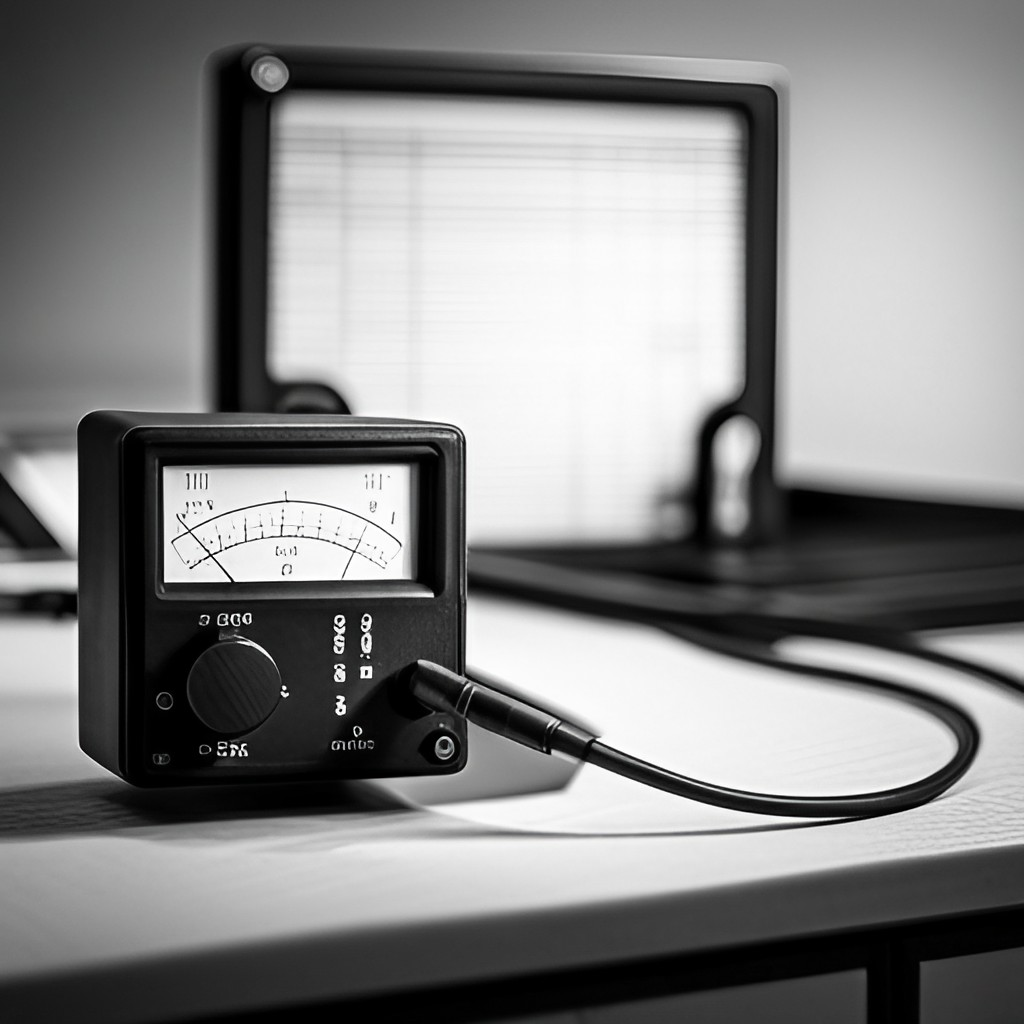Understanding Watts: Explaining Amps, Volts, Ohms, and Amp Hours

Understanding Watts: Explaining Amps, Volts, Ohms, and Amp Hours
Do you often find yourself feeling confused with the various electrical jargon encountered in product instructions or conversations about power efficiency? Becoming familiar with fundamental concepts like watts, amps, volts and ohms can be of great benefit for everyday tasks as well as solar energy systems. In this post we will discuss these terms and examine their importance to electrical setups.
Key Takeaways
-
Watts are a unit of power that measure energy transmitted by an electrical current.
-
Amps, volts, and ohms play important roles in electric circuits and understanding their relationship is essential for working with electrical systems.
-
Amp hours help to measure the capacity of batteries while applying watts can maximize efficiency in solar power systems.
The Power of Watts

Watts, a measurement of electric power in electrical circuits, are essential to understanding electricity and gauging its output as well as the amount of energy consumed by things like light bulbs over one hour. Knowing the wattage allows us to estimate how much power is being used for an entire hour when it comes to devices relying on electricity.
Defining Watts
A unit of power, dubbed after Scottish inventor James Watt, is defined as the energy conveyed through a current powered by an ampere with its voltage potential difference. In other words, it stands for the speed of the work done in an electrical circuit and has been determined to equal one joule every second.
The Role of James Watt
James. Watt was a groundbreaking inventor renowned for his development of the steam engine. His upgrades to this technology boosted its efficacy and powered the Industrial Revolution, changing many sectors including production and transportation.
Watt came up with horsepower as well as defining wattage in SI units (International System of Units) for gauging power levels in respective systems.
Understanding Electric Circuits: Amps, Volts, and Ohms

In order to explain electric circuits, and the power output of electrical systems as a whole, it’s important to understand how electricity flows in relation to volts, amps and ohms. By understanding these elements more deeply, you can gain greater comprehension of both electric power and circuitry.
Amps: The Flow of El ectricity
Amperes (amps) are the unit used to gauge electrical current flowing through a circuit, just like water flowing through moves in a pipe. This flow of electricity furnishes electronic appliances and powers up the electrical system. It’s measured by counting electrons moving within said circuit. To measure this phenomenon accurately, we use amps as our standard for measuring electric current.
Volts: The Driving Force
Voltage is a measurement of electric potential difference, which works to drive the motion of electrons through an electrical system. Boosting up this energy in said circuits can optimize efficiency due to increased voltage leading to decreased current and thus less wasted energy. To measure it one must use a voltmeter. When connected between two points inside a circuit or component, it will display what value does the difference in their respective potential have.
Ohms: The Resistance Factor
The electrical resistance present in an electric circuit, measured by ohms, restricts the movement of electrons and affects how efficiently it functions. According to Ohm’s Law, any alteration of that level of resistance will influence its power output, voltage levels and current flow rate too. As if controlling the size of a pipe restricting water flow. Adjustment to this obstruction regulates these other aspects for optimal operation within the system’s parameters.
The Connection Between Watts, Amps, Volts, and Ohms

Having a clear understanding of the connections between watts, amps, volts and ohms is essential to working with electrical systems. These concepts provide an integral base for assessing electric networks, resolving any challenges encountered in them and boosting their efficiency. As such, they form the basis that enables professionals to build circuits as well as increase performance in these kinds of electrical setups.
Ohm's Law: The Foundation
According to Ohm’s Law, the amount of electrical current in a circuit is directly related to the voltage across it and is inverse with respect to resistance. This fundamental law allows us accurately predict how these components are interconnected within an electric system, providing practical insights into designing or studying circuits.
The Power Equation: Calculating Watts

The power equation (P = V * I) shows how wattage can be determined by taking voltage and current into account. This law is linked to Ohm’s Law, which explains the connection between voltage, resistance in an electrical circuit and current.
Using this equation offers insight on energy utilization or delivery for electric systems or devices that help optimize safety measures as well as design efficiency. With these calculations you get a better understanding of the amount of power being used or delivered from any given source within those parameters specified above such as volts, amps & ohms etc.
Amp Hours and Energy Storage

Amp hours are a metric used to measure the energy-storing capabilities of batteries, and it is an important factor in selecting suitable ones for specific purposes like solar power systems or electronic devices. Knowing about amp hours can help one decide which battery will be best suited for their requirements as far as power supply goes.
Defining Amp Hours
Ampere hour rating, also referred to as amp hours, is a measure of the energy capacity that a battery can store. This calculation is determined by taking into account both current (in amps) and duration (one hour). The Amp Hour rating for any given battery can be calculated simply by multiplying its amp draw with discharge time expressed in one-hour increments. An additional conversion expressing this same rate may come in watt hours, which are obtained through multiplication of the voltage along with their associated ampere-hours units.
Lithium batteries have become quite popular due to these ratings indicating how much power they carry over an extended period. Ultimately pointing out what amount of energy you’ll receive from them per unit each day or per second per week based on your own needs and specifications respectively.
Factors Affecting Amp Hour Ratings
Amp hour ratings are heavily affected by a variety of elements, including the battery type and discharge rate. Different batteries like lithium-ion, nickel-metal hydride or lead-acid come with their own set of energy densities as well as varying levels in discharged power that can influence an amp hour rating significantly. Heating up the current running through its internal resistance also plays a role – increasing heat increases current while reducing overall amp hours ratings conversely. Similarly, changes to temperature (such as cooler temperatures having less capacity) cause fluctuations too for those metrics.
The implications cannot be understated - for example, it is essential to get familiarized with these principles if utilizing different kinds of rechargeable cells efficiently is desired.
Applying Watts in Solar Power Systems

When it comes to solar power, having a good grasp of concepts like watts, amps, volts and ohms is paramount in the design process as well as monitoring. Such an understanding allows you to get more out of your panels by ensuring the right inverter selection for improved efficiency and maximum performance potential within your system.
Sizing Solar Panels and Inverters
When sizing solar panels and inverters, we use units such as watts for calculating the power output of solar systems, amps to determine total wattage for selecting an inverter, volts to measure system voltage and ohms which help calculate resistance in the system. It is imperative that when choosing a suitable inverter its DC rating should be equal to that of your complete solar energy setup. Having accurate measurements ensures more efficient functionality within any given photovoltaic installation. Know the right amount of Watts, Amps Volts & Watts. Ohm’s aid us in optimal operation potential from our chosen product types!
Monitoring Energy Efficiency
Keeping an eye on energy efficiency is crucial for improving performance and cutting costs in solar power systems. Monitoring tools can be used to pinpoint any issues that could affect the system’s efficacy, enabling it to produce maximum output with minimal environmental impact while keeping expenditure under control. Checking regularly how effective your solar panels are running will help guarantee optimum results from your power system.
Summary
Having an understanding of the fundamentals such as watts, volts, amps and ohms is crucial to many electrical projects like solar power systems. This knowledge can help us in evaluating our energy efficiency options while also enabling us to design circuits more efficiently, troubleshoot any issues effectively and save on cost for electricity-related operations. So by becoming familiar with these elements, we are better able to make decisions about sustainability related impact and capital expenditures when it comes to managing electrical components in our lives.
Frequently Asked Questions
What is a watt in electricity?
A Watt is equal to one ampere of electrical power when under the pressure of a single volt. This unit represents the rate at which energy created by an electric current flowing through resistance gets converted into heat, and thus work being done.
The amount needed to get certain machines going can vary hugely. Some may require the equivalent of only several Watts while others may need far more than that.
How are watts calculated?
Power can be worked out by multiplying the voltage in Volts and current flow, measured in amps. For instance, at 240 volts one watt of electricity with 10 amps produces 2400 watts of power.
What is volts in simple terms?
Measured in volts (V), voltage is the electric potential or “pressure” of an energy source which causes electricity to flow and allows it to do work. It measures how strong this electrical potential or pressure is that propels charged electrons through a circuit.
What is the difference between watts and watt-hours?
Watts measure power, whereas watt-hours measure energy consumed over time.
How are amp hours used to determine battery capacity?
Amp hours measure the same amount of current a battery can provide over a given period of time, allowing us to gauge its capacity and power potential.









Leave a comment